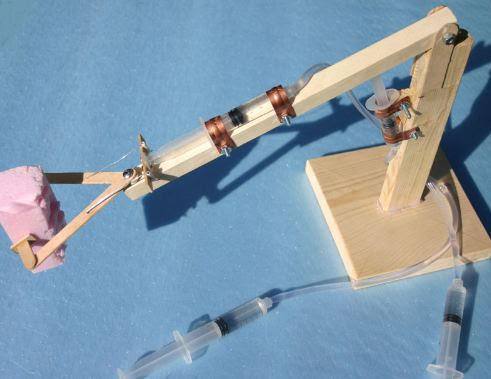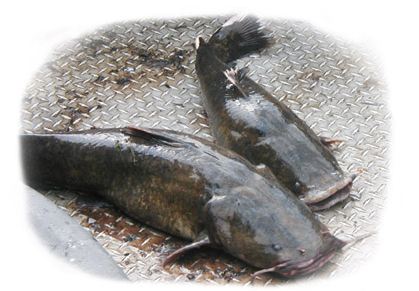I just happened to run across the first webpage I had created on local Winona aviation legend Max Conrad. After this I had created a website residing at http://www.maxconrad.com which now belongs to his family. A couple of weeks ago I received a call from a writer who had interviewed me for a story about Max and the Armistice Day Blizzard.
Update: Blog Post About Max Conrad's Music
Who Was Max Conrad?
Max Conrad was one of the greatest small plane pilots ever. He was a shy,
soft-spoken man with an irresistible warm grin. In later years he was often
known as the "Flying Grandfather". Along with many astounding accomplishments,
Max suffered many personal tragedies including almost dying early in his
aviation career.
Born in Winona Minnesota in 1903. Max left and returned to Winona many times
through out his life.
Major Accomplishments
- 50, 000 hours in the air, the equivalent to about six years
- Nearly 200 solo flights across the Atlantic and Pacific oceans
- First light plane flight New York to Paris since Lindbergh in 1954.
- Set a world's high jump record of 6 feet 8 1/2 inches in 1931 at the age of
29.
- Taught more than 3000 people to fly
- Trained 44 airline captains - more than 350 Navy, Army, Air Force, and
Marine pilots and 56 licensed mechanics
- Saved a number of lives in the 1940 Armistice Day blizzard
- Wrote book describing his Atlantic crossings, "Green Water"
- Broke almost every record possible in a light plane including around the
world in eight days.
Max Conrad Recognition Day August 30, 1961 -Between 12,000 to 15,000 people
attended.
The late John F. Kennedy said to Max while president in a telegram:
"I'm happy to learn of the dedication of Max Conrad Field in Winona,
Minnesota. Your numerous long range flight records in small aircraft are a
tribute to your courage and professional ability. You have helped to prepare
young people for the complex and serious responsibilities in the aerospace age.
In addition, your work and example have brought good will to many parts of the
world".
Ford Tri-Motor purchased with money borrowed from 30 Winona businessmen. Max
planned to increase his passenger load on flights to California but instead used
it for charter, stunting at fairs, dropping parachuters, and multi-engine pilot
training. The plane was destroyed when one of the engines caught fire on the
ground.
Picture #4
Picture #5
Winona's first airport grew to a complex that included classrooms, offices, a
shop, restaurant, living quarters for students, as well as housing over thirty
aircraft. Burned to the ground winter of 1942 when gasoline was spilled and
frozen hangar doors could not be opened. Max saved the man who had spilled the
gasoline and caught on fire by smothering the flames with his own body and then
pulling off the man's coveralls.
Picture #6
Winona Experiment
The Winona Experiment was an attempt to rekindle an interest in aviation in
young people. Max wanted to conduct the experiment in Winona although others
did not consider Winona the best choice. Over a period of 13 weeks, boys and
girls were to construct a full-size aircraft under Max's supervision. Material
was donated by manufacturers and the Winona city council have approved rent-free
space at the municipal airport. The program was to serve as a model for a
nationwide program, still Max could not afford to keep the program going without
a steady income.
Picture #7 - 1966
Aztec C, fuel capacity was 476 gallons with the addition of cabin and wing tip
tanks. The plane was named "St. Louis Woman" after his daughter Jana Kosko, who
lived in St. Louis at the time.
Max with his trademark Mickey Mouse doll. Max would talk to the doll on long
flights.
Armistice Day Storm
November 11, 1940 started out as a beautiful day with
temperatures near 60 degrees but by the next morning temperatures were below
zero and 26 inches of snow had fallen. Almost 60 people died around Winona and
the surrounding areas.
Max took out the Piper Cub because it was the easiest to take
out of the hangar.
He flew over the backwaters of the Mississippi spotting a boy
he knew standing in frozen water, and soon spotted more people. Max wanted to
land but knew the wind would flip the plane so he returned to the airport.
Knowing the risks of flying in such weather, Max could not leave those men
stranded without trying to help. He flew the rest of the day and part of the
next, guiding rescue boats, throwing out supplies, and guiding hunters to rescue
boats.
Hit By a Propeller
Most airplane engines of the time did not have electric
starters and were hard to start once stopped. Common practice was to keep the
engine running while passengers were loading and unloading.
Max and one of his students, Bob Rumick were flying to
Minneapolis but landed in Frontenac where Bob's aunt owned a hotel. After lunch
they were persuaded to give rides, the last ride was to Bob's cousin and her
friend. Bob's cousin jumped to the ground towards the spinning prop and Max
tried to save her. Max was hit by the tip of the propeller in the head.
Doctors at the hospital in Red Wing called his parents and
told them he was dying. Max's mother called her brother-in-law an attending
physician at the Mayo Clinic and begged him to find a neurosurgen who could come
and look at Max. After five days, Max awoke from a coma.
Soaring Above Winona, Worries Some Residents
One of Max's students tells the story of how he spotted a
large thundercloud over the airport in Winona, found the associated thermal
updraft and flew around with the engine turned off. People thought Max was in
trouble, and called the police. Meanwhile Max flew the plane to a field several
miles and did a dead-stick landing. He again started the engine and flew back to
Winona.
Making Record Setting Flights
Preparing the Plane
Remove everything not absolutely needed: floorboards,
soundproofing, upholestery, seats, and even normal engine components.
Reduce drag; door handles, latches, antennas, even the
flaps!
The plane was basically a flying gas tank
From the "Standard Catalog of Piper Twin Engine Aircraft
1954 - 1993" by Jim Cavaugh
1966 Aztec C Specs
Useable fuel 144 gallons
Wingspan 37' - Average empty
Weight 2933 pounds - Average Useful Load 2267 pounds - Top Speed 216
mph - Max Cruise 210 mph
Range 1055 miles - Endurance 5.9 hours
2 - 250 hp Lycoming engines
Max Conrad is mentioned on Page 39 of this book
"In early 1961, Max Conrad set an international speed record
when he flew a Piper Aztec
around the world in less than nine days, at an
average speed of 123.2 mph.
Preparing the Man for a Severe Test of
Endurance
Beginning with his charter flights to California, Max trained
himself to stay awake for long periods of time. He found if at the end of the
long flight he alternated between a little rest, a light meal, some exercise,
and more rest; he was ready to go again within a day. If instead, he ate heavy
after a long flight, it prolonged recovery or even caused sickness. He also
prepared for a long flight by losing one night's sleep a week for a month before
a long flight.
Max was awake for as much as 60 hours at a time while flying.
My thoughts are, how can a
human go that long without sleep? In doing some
research, I found that people have forced themselves to stay awake for
considerably longer than 60 hours
Side Effects of Long Periods of No Sleep
decreased judgment ability and decision making, reduced
short-term memory capacity
People report hallucinating and having trouble
speaking.
Major disasters such as nuclear accidents of Chernobyl and
Three Mile Island and the spill of the Exxon Valdez could possibly be due to
lack of sleep.
The record appears to be 264 hours or about 11 days without
sleep.
Max's New York to Paris
23 hours and 23 minutes in Piper Apache twin engine 150 hp -
150 mph cruise, long range
total weight 4900 pounds, roughly 3700 miles
overloaded plane by 1500 pounds
Lindbergh Spirit of St. Louis 46 foot wingspan 2500 pounds of
fuel total weight 5135 pounds
Weight savings - no radio to save 90 pounds, no fuel guage -
heavy and inaccurate, used a watch and the tachometer Lindbergh was a stickler
for detail in the construction of Spirit of St. Louis 33 hour flight
THE INTERNATIONAL HARMON TROPHY
"In 1926 Clifford B. Harmon, a wealthy sportsman and aviator,
established three international trophies to be awarded annually to the world's
outstanding aviator, aviatrix, and aeronaut. A fourth trophy was later created
to honor achievements in space flight. The Harmon Trophy--the aviator's
award--is given for the most outstanding international achievements in the
preceding year, with the art of flying receiving first consideration. The
Smithsonian Institution acquired the aviator's trophy in 1950 from the Clifford
B. Harmon Trust."
Lindbergh, Howard Hughes, Jimmy Doolittle, Chuck Yeager,
Wiley Post,
http://www.nasm.edu/nasm/aero/trophy/harmon.htm
Max Conrad Timeline
1903 - Born in Winona Minnesota
1921 -
Marquette University
1922 –
University of Colorado
1923 –
Detroit Michigan, worked at Cadillac and Plymouth factories
1924
University of California at Berkley
1925
University of Minnesota Engineering School
1928 – first solo flight Chicago flying lessons – WDN
article “learned to fly in Denver”
Wichita Kansas to pick up
airplane
1928 – back to Winona
First week in Winona had first
crash landing due to engine failure and stalled landing Student pilot crashed
plane with Max in it by hitting a haystack, Max was hurt
1929 – Max is hit by propeller,
almost dies
1930 – flies to California to
recuperate
1931 – set world’s high jump
record of 6 feet 8 ½ inches
1931 – Marries Betty Biesanz
1931 – Brother Art dies in plane
crash
1937 – buys Ford Tri-Motor, it
later burns up in a fire
1940 – Armistice Day rescue
1943 – hangar burns, Max rescues
man
1943 – left Winona to be a bush
pilot and then pilot for Minneapolis Honeywell Company
1948 – family moves to
Switzerland
1951 – Returns to Winona, starts
the Winona Experiment
1951 – Non-stop between Los
Angeles and New York, first person in light-plane
1953 – Flew to 48 states
1954 – New York to Paris in 22
hours in a light-plane,
1955 – Starts ferrying airplanes
across the Atlantic
1958 – named “Pilot of the Year”
by the National Pilots Association
1959 – Start of his record
setting
1961 – Winona held “Max Conrad
Recognition Day”. Name Winona Municipal Airport was changed to Max Conrad
Field
1961 – Flew around the world in
eight days, breaking the previous light-plane record by three weeks.
1964 – Dissolves Conrad Aviation
in Lock Haven, headquarters for ferrying operation
1964 – Moves to Prescott
Arizona
1965 – non-stop flight between
Capetown, South Africa and St. Petersburg Florida, 7878 miles in 55 hours.
1979 - Died at age 76

















































